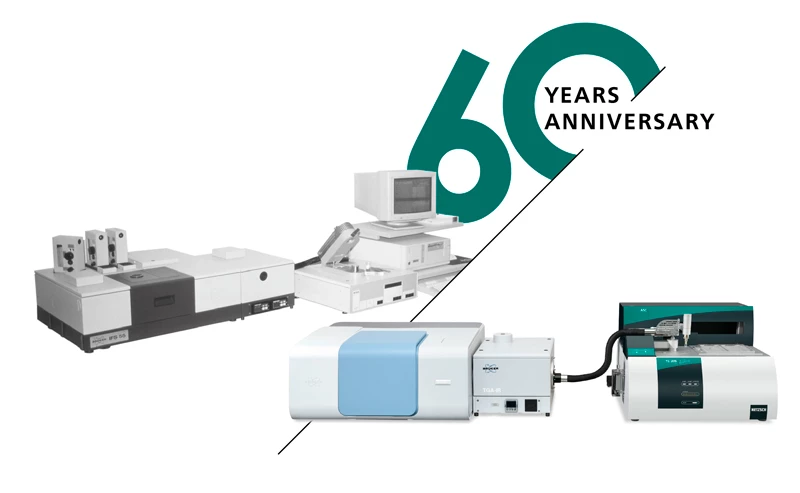
09.03.2022 by Bruker Optics GmbH & Co. KG
Thermal Analysis and FT-IR: The Collaboration Between NETZSCH and Bruker
Combination with an FT-IR (Fourier Transform Infrared Spectrometer) has become an absolute must, especially in the polymer-producing, chemical and pharmaceutical industries. NETZSCH Analyzing & Testing has been collaborating with the well-known producer of spectrometers, Bruker Optics, since 1993.
An article by Bruker Optics GmbH & Co KG
The collaboration between NETZSCH-Gerätebau GmbH and Bruker Optics GmbH & Co. KG has been in existence since 1993. What started out with a sale in Australia has developed into a close partnership in the field of FT-IR coupled thermal analysis over the years. Join us on the journey back to the roots of this collaboration in January 1993 and see for yourself how it has evolved over the years. And look forward with us to the future developments that will keep this cooperation successful as time goes on.

How it all began
It all started in 1993 with an inquiry from Curtin University in Perth, Australia to Bruker. Curtin was planning to purchase an FT-IR spectrometer. During the course of their initial discussions with Bruker, it became quite clear early on that – in addition to an FT-IR spectrometer – they also required a thermobalance for evolved gas analysis.
At the same time, NETZSCH had been intensifying its search for alternative gas analysis methods and new collaborative ventures in this field, so NETZSCH contacted Bruker. That led to Erwin Kaisersberger traveling to Bruker in Karlsruhe with a TG 209 to carry out initial tests. The newly developed TG 209 was light and of manageable size, and was – thanks to the proficient help of Dr. Albrecht Rager at the Bruker applications laboratory – quickly connected to the existing FT-IR instrument with gas measuring cell. Several tests, even with critical substances such as naphthalene, were then carried out and proved to be straightforward and successful.
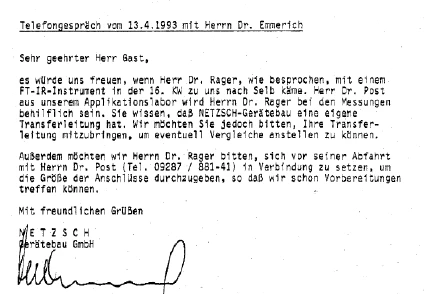
It was soon afterward that we were able to successfully supply our first joint customer, Curtin University in Australia. Bruker and NETZSCH were able to particularly impress the customer with the fact that the volumes of both the gas cell and the furnace were very small and that the NETZSCH TG allowed for the input of small samples in the mg-range. Bruker’s gas cell measured 10 ml and was additionally thermally insulated.
The “historical” Application Sheet from that time (FT-IR coupling with an STA 409 C) can be downloaded here.
At a subsequent meeting, the managing directors of the two companies got to know each other. They decided to continue their intensive collaboration into the future as well. The first demo units were soon placed at Bruker and NETZSCH and the companies hosted their first joint symposium before the end of 1993. An additional new area of focus was polymer applications.
The good partnership between the physicists Mr. Gast (of Bruker) and Dr. Emmerich (of NETZSCH), who were the managing directors at that time, along with the contributions of all employees involved on both sides, led to success and paved the way for close collaboration and the optimization of the FT-IR coupling.
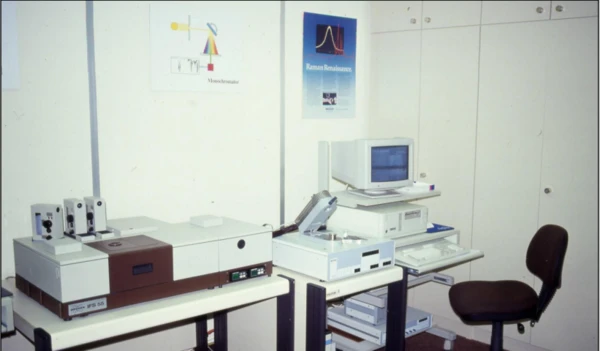
Collaboration Becomes Team Play
Over the course of the years, the number of annual requests for such coupled systems grew steadily. The needs regarding technical implementation and networking also changed. To meet the new requirements brought about by this change, both companies worked continuously to further develop and improve their products and solutions.
In 2003, Bruker and NETZSCH jointly developed a communication interface allowing for the exchange of measured data among the two software solutions. This involved more than just the import and export of various information subsequent to the measurement. Rather, the main focus was on live data exchange during the active measurement along with synchronization of the two measurements. Even today, the start of a coupled measurement is carried out from within Proteus® software. A measurement in OPUS by Bruker is initiated by Proteus®. What may seem self-evident today was at that time revolutionary and future-oriented.

The year 2012 brought more evidence that this collaboration was setting new standards in the field of coupled thermal analysis. The Perseus coupling was launched: a benchtop STA solution without transfer line and with a compact Bruker ALPHA Spectrometer directly above the furnace. The footprint required as well as the length of the transfer line were both reduced to a minimum. The TG Perseus was realized in 2013.
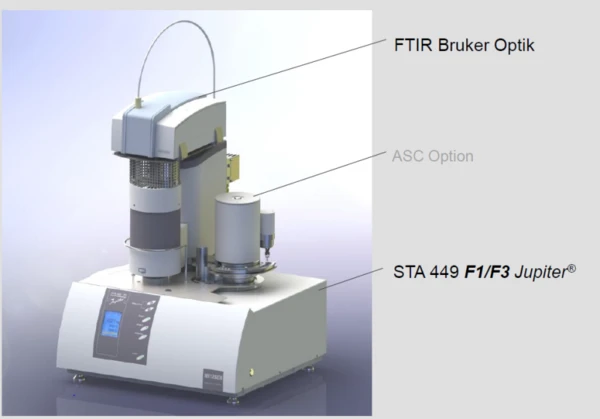
Introduction of the new INVENIO® spectrometer platform by Bruker in 2018 expanded the possibilities for the FT-IR part of the coupled system. The spectrometer can be tailored to specific customer requirements and accordingly equipped to be as high-performing as possible, as flexible as necessary and as extensively automated as required.
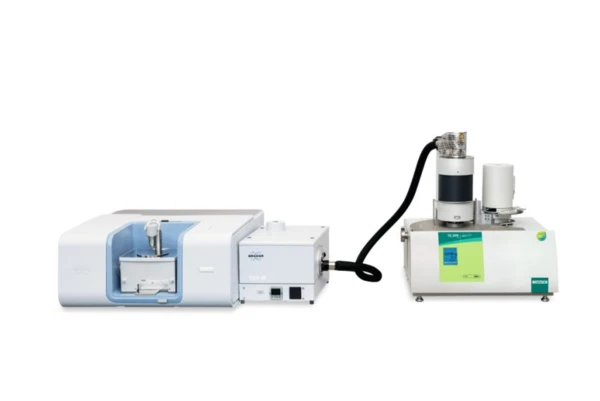
The automatic TGA sample changer (ASC) in combination with Bruker instrumentation exhibits perfect team play between the two software packages and allows for fully automated coupled measurements: The exchange of measurement data takes place already during the measurement, and the automatic start/stop signal enables measurements with the ASC to have individual parameters set for each individual measurement position.
Future-Oriented
The intensive collaboration between the two companies has been expanded and strengthened over the past decades. Today, the “next generation of employees” is working intensively on the further development and optimization of evolved gas analysis and jointly hosting many events. For example, Bruker is a regular speaker at the “Selb Coupling Days”, an international conference organized by NETZSCH on the coupling of gas analysis methods to thermoanalytical instruments. Conversely, NETZSCH has been on the list of participants at Bruker’s users’ meetings for years. Furthermore, the two companies regularly host joint webinars and seminars. The teams have even gone to the trouble of organizing liquid nitrogen in hotels during a roadshow, in order to demonstrate live measurements :-). However, thanks to the increased measurement sensitivity of the current spectrometer generation, it is possible to demonstrate many applications nowadays without the need for liquid-nitrogen-cooled detectors.

A little Preview:
We will be presenting a very special new development in the months to come.
…And in the coming year, 2023, the collaboration between NETZSCH-Gerätebau and BRUKER will be celebrating its 30th anniversary. We will also be duly celebrating this together – so stay tuned!